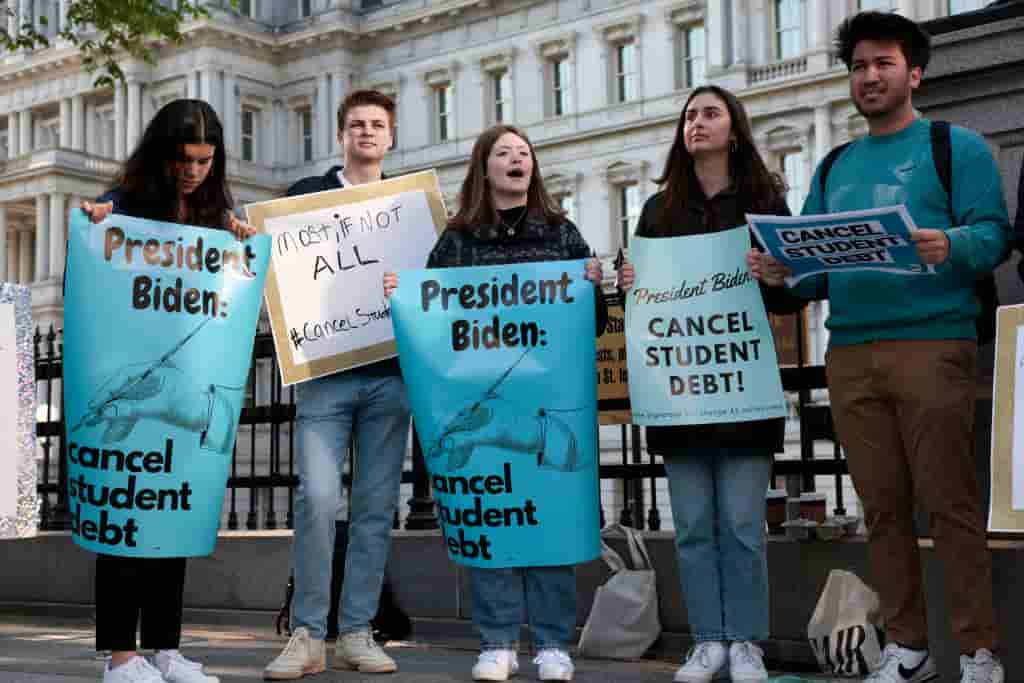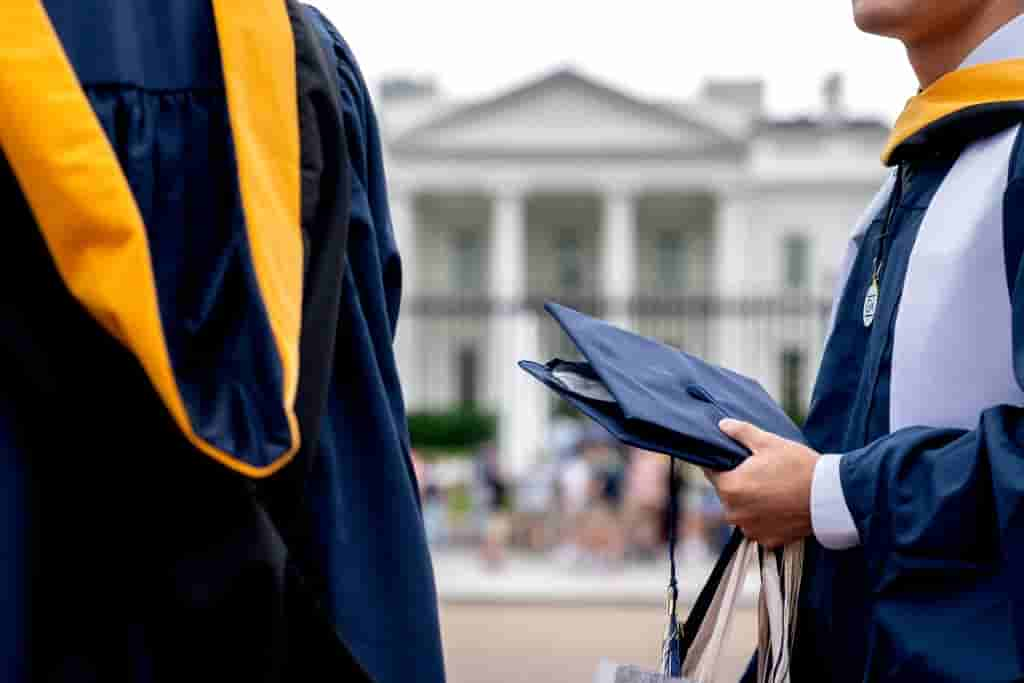More borrowers could have their monthly payments reduced to $0 under the new student loan forgiveness plan under the Biden administration on January 10.
The new choice modifies one of the four currently available income-driven repayment plans, which restrict borrowers’ expenses at a percentage of their discretionary income to make debt repayment more manageable.
Under the proposed Revised Pay As You Earn Repayment Plan (REPAYE) borrowers would be forced to pay 5% of their discretionary income each month toward their undergraduate student loans rather than 10% of their discretionary income currently.

WASHINGTON, DC – APRIL 27: Activists hold signs as they attend a Student Loan Forgiveness rally on Pennsylvania Avenue and 17th street near the White House on April 27, 2022 in Washington, DC. Student loan activists including college students held the rally to celebrate U.S. President Joe Biden’s extension of the pause on student loans and also urge him to sign an executive order that would fully cancel all student debt. (Photo by Anna Moneymaker/Getty Images)
Student Loan Forgiveness: Who Are Eligible For $0 Payments
Business Insider reported that the new plan would reduce the compulsory discretionary income payment from 10% to 5%, which will result in a halving of students’ payment requirements. Graduate loan holders will continue to pay 10% interest, while borrowers who already have a combination of graduate and undergraduate loans will have to pay between 5% and 10% interest.
GoBankingRates (via Yahoo! Finance), citing a CNBC report, added that the REPAYE plan currently defines discretionary income as any income that is generated over 150% of the federal poverty level, which is used to evaluate your eligibility for specific programs and benefits. Borrowers won’t be compelled to make payments if their income exceeds 225% of the federal poverty level under the new restrictions.
Those who have a federal graduate or undergraduate student loan are eligible for these reforms.
ALSO READ: Student Loan Forgiveness Delayed: Federal Student Aid Office Making Changes
When To Receive Loan Forgiveness Under This Plan?
The Biden Administration expressed concern in the Department of Education’s fact sheet that because of the length of time needed to secure debt forgiveness, borrowers with minor amounts are deterred from using existing IDR programs, even though they would benefit from decreased monthly payments.
In the same fact sheet, any extra $1,000 borrowed beyond that amount would require the borrower to make monthly payments for an additional year before being forgiven.
The Department’s projection said 85% of community college students would be debt-free after ten years of repayment.
RELATED ARTICLE: 2023 Student Loan Forgiveness Remains A Lot Of Question To Its Mortgagor

